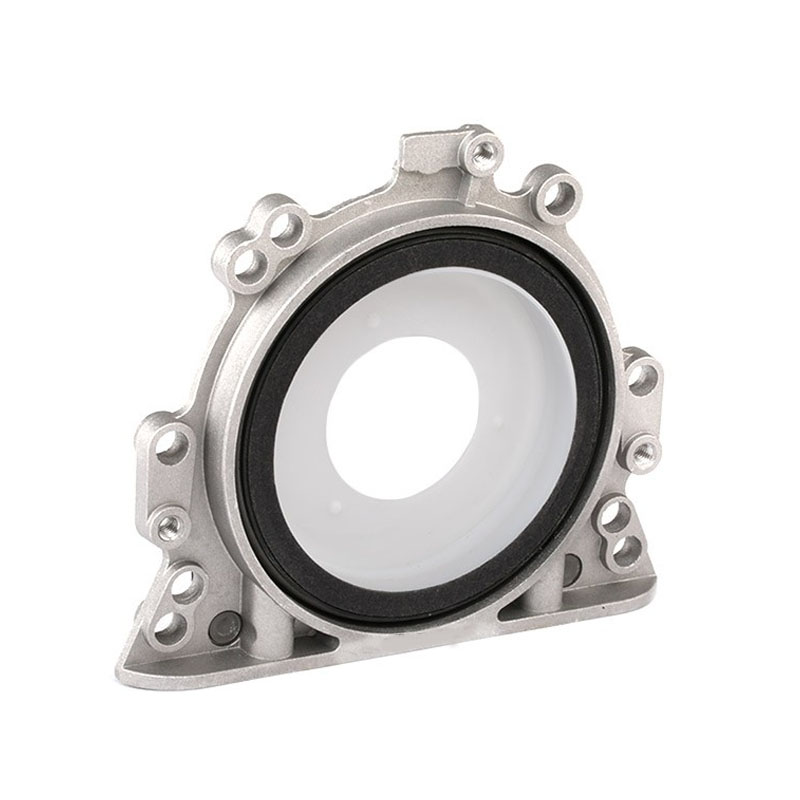Tips for Replacing Lower Oil Pan Gasket Effectively and Efficiently
Understanding the Lower Oil Pan Gasket Importance and Maintenance
The lower oil pan gasket is a critical component in an engine's lubrication system. It serves as a seal between the oil pan and the engine block, ensuring that oil is contained within the oil pan and doesn't leak into other areas of the engine or onto the ground. Understanding its function, signs of failure, and maintenance is essential for any vehicle owner.
Function of the Lower Oil Pan Gasket
The primary purpose of the lower oil pan gasket is to prevent oil leaks. The oil pan itself collects and stores the engine oil, which lubricates the moving parts and ensures smooth operation. The gasket prevents oil from escaping the oil pan, which could lead to a low oil level and, consequently, severe engine damage if not addressed promptly. Additionally, a properly sealed oil pan helps maintain the right oil pressure throughout the engine, promoting efficient performance.
Signs of a Failing Lower Oil Pan Gasket
Like any component in a vehicle, the lower oil pan gasket can wear out or become damaged over time. Here are some common signs that the gasket may be failing
1. Oil Leaks One of the most apparent signs is the presence of oil spots under your vehicle. If you notice a dark, oily puddle forming beneath your car, it's a strong indication that the oil pan gasket might be leaking.
2. Low Oil Levels Regularly checking your oil level is crucial. If you find that your oil levels are consistently low without any visible leaks from other parts of the engine, the oil may be seeping through a compromised gasket.
3. Oil Warning Light Modern vehicles are equipped with oil pressure monitoring systems. If the oil warning light on your dashboard illuminates, it might signify a drop in oil pressure due to a leak in the oil pan gasket.
lower oil pan gasket

4. Engine Noise Insufficient lubrication from a low oil level can lead to increased friction between engine parts. If you hear knocking or grinding noises, it may be due to a failing oil pan gasket.
Maintenance Tips
Maintaining the lower oil pan gasket is crucial for the longevity of your vehicle's engine. Here are some tips for effective maintenance
1. Regular Oil Changes Changing your oil at regular intervals not only keeps the engine lubricated but also allows for the timely replacement of the oil filter and inspection of the oil pan gasket.
2. Visual Inspections Periodically inspect the oil pan and surrounding areas for any signs of oil leakage. Catching these issues early can save you from more extensive repairs later.
3. Professional Inspections Have a trusted mechanic examine your vehicle periodically, especially if you start noticing any warning signs. A professional can identify potential issues before they escalate.
4. Quality Gaskets If you ever need to replace the oil pan gasket, make sure to use high-quality replacement parts. Low-quality gaskets can lead to recurring problems and costly repairs.
Conclusion
In summary, the lower oil pan gasket plays a pivotal role in maintaining proper engine lubrication. Regular maintenance, coupled with vigilance for signs of failure, is essential in ensuring a healthy and efficient engine. By understanding the importance of this seemingly minor component, vehicle owners can take proactive measures to extend the life of their engines and enhance overall vehicle performance. Staying informed and practicing good maintenance habits will not only save money in the long run but also contribute to a safer driving experience.
-
Your Essential Guide to Car Repair Kits: From Rust to Dings
News Jun.13,2025
-
Understanding Vital Engine Seals: Key Gaskets in Diesel and Performance Engines
News Jun.13,2025
-
The Vital Role of Bearings in Marine and Boating Applications
News Jun.13,2025
-
Sealing the System: A Complete Guide to Engine Oil Gaskets
News Jun.13,2025
-
Sealing the Foundation: A Complete Guide to Engine and Transmission Pan Gaskets
News Jun.13,2025
-
Essential Bearings and Hubs for Marine Vessels and Trailers
News Jun.13,2025
-
Your Complete Guide to Automotive Oil Drain Plugs and Valves
News Jun.12,2025
Products categories















